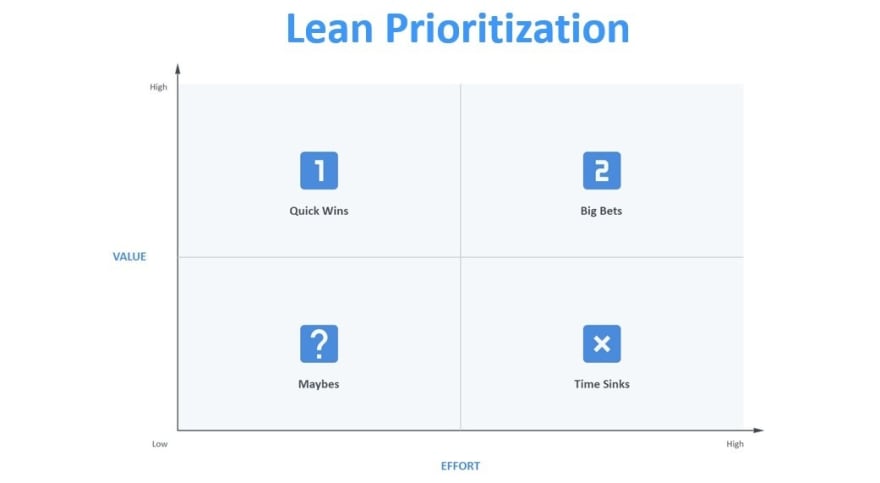From the beginning of their careers, product owners or product managers expect their product backlogs to be healthy and structured. Alas, it does not work that way. Unfortunately, a backlog can grow rapidly and ultimately turn into unmanageable chaos.
In order to maintain the product backlog clear and healthy, product teams must organize backlog grooming. This process can be critical to successful product management.
What is Backlog Grooming?
Backlog grooming is a regular session where backlog items are reviewed, discussed, and prioritized by product owners, product managers, and the rest of the team. The process is also known as backlog refinement.
The main goal of the backlog grooming event is to keep the backlog up-to-date and guarantee that all necessary items will be prepared for upcoming sprints. The meeting also helps product owners align the organization behind the strategy that reflects the backlog items.
Agile backlog grooming occurs on a regular basis. It can be officially scheduled or become an ongoing activity. The key goal for product owners and their teams is to keep the backlog tidy permanently.
The meeting was added to the list of official Scrum ceremonies in 2011. However, the new version of the Scrum Guide, released November 2020, claims that Backlog Grooming is not an official ceremony now.
What are the Most Essential Backlog Grooming Activities?
Any upcoming backlog grooming session should motivate product owners to balance the needs of all stakeholders, their team, and project objectives. This process includes many tasks. PMs and ROs have to take into account their resources and available project management tools. Here are some basic activities required for a healthy backlog meeting:
Adding and eliminating user stories
Getting rid of the user stories that no longer appear relevant is one of the more significant backlog grooming maneuvers. At the same time, as some user stories drop off the backlog, others should be included.
Splitting the stories
You will probably want to break down user stories that have gotten larger than they should be. This process is called splitting. It will relate those user stories that are of a high priority but too large to fit in an upcoming iteration.
Updating estimates and priorities
Priorities will definitely change. They must be labeled in the backlog and the listing of the user stories. So, backlog grooming is also about the regular reassessment of the user stories' priorities. Estimates will also be changed.
Who should attend the backlog refinement event?
Note that product backlog refinement is not yet an official Scrum meeting. This event should induce team members to a more productive sprint-planning meeting.
There is actually no consensus on who should attend the backlog grooming meeting. It'd be perfect if the whole team participate. However, it may be not really practical for this meeting. Here are a couple of reasons why:
- Backlog grooming usually happens 2-3 days before the end of the sprint. Any team will probably have someone who is extremely busy two or three days before this date. If you ask that specialist to attend the grooming meeting session, you could risk the delivery of whatever product backlog item the person is working on.
- Not all team members have an opportunity to participate. A good idea is when 5 -10% of the effort in each sprint should be spent on backlog grooming.
The Benefits of Backlog Grooming: Why Is It Important?
Some people think that all this grooming is more trouble than it’s worth. There are also procrastinators who prefer to wait until the last minute to gather all tasks for the next sprint. However, if care about it, regular backlog grooming have some evident benefits, meaning that it:
Improves team efficiency
Inspiring teams to continue pushing forward and boosting productivity is the biggest motivation for engaging in product backlog grooming.
Eliminates backlog chaos
Product managers, QA testers, or even developers constantly add new items to the backlog. This may lead to loss and mess. That is why backlog refinement is a way to take that chaotic list and clean it up to make it a manageable task list for the team to use.
Keeps the entire team updated
Everyone can see where the team stands in terms of the different features, bug fixes, and improvements. This is also a crucial benefit of Scrum backlog grooming. It leads to keeping transparency among all team members.
Provides new info
The story grooming process can be also considered as the act of communication. When the backlog is updated, new information is disseminated throughout the team. Everyone is on the same page. Team members may get feedback and the backlog also captures feedback from clients during live demos.
Backlog grooming and Sprint planning: are they similar?
- Both ceremonies are aimed to engage all attendees in the conversation.
- Backlog grooming and Sprint planning aim to ensure that a team has a shared understanding of a particular body of work.
- If there is an experienced facilitator, who can professionally guide the conversation, both meetings are more likely to have successful results.
- If there is a person who can act as the “Voice of the Customer”, both activities will succeed.
In general, backlog refinement ensures that the requirements will be clarified and user stories will be prepared for work in advance prior to the sprint planning.
As the result, your team will have a well-defined set of user stories split into independent components; They will be thoroughly evaluated and prioritized. In order to set priorities better, you may implement any friendly project management tool with built-in prioritization that will assist you to remove not relevant user stories, increase/decrease the priority of separate tasks, add new features, revise them, and more. For example, a convenient Value vs Effort matrix may be helpful there.
Bottom line
Backlog story grooming should be a permanent activity as this process is the norm for the qualitative development of the product. Optimization of tasks in the backlog for subsequent work with them is the most important thing here.
The refinement process helps product teams to clarify the relevance of the tasks presented in the backlog, review existing issues, and receive additional info on tasks that are still unclear.










Latest comments (2)
Hi Pavel, thanks for the nice explanation!
Would like to point that by the new version of the Scrum Guide, released Nov. 2020, Backlog Grooming is not an official ceremony, maybe you want to update the article.
Thanks for your comment!